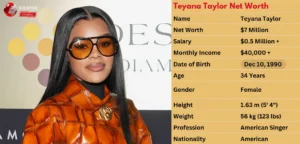Hybrid Collapse arrives as a multi-platform spectacle—part music release, part fashion editorial, part digital art film—engineered for the algorithmic stage. Built from AI visuals, cinematic sound design, and loopable moments tailored to TikTok, Reels, and YouTube, it turns every drop into an event and every fragment into shareable drama. This is entertainment for the posthuman era: viral, immersive, and relentlessly stylish.
A New Kind of Media Event
The entertainment industry thrives on novelty — new technologies, formats, and experiences constantly reshape how audiences consume culture. Hybrid Collapse enters this landscape not as a traditional music or fashion project but as a multi-platform entertainment phenomenon. It merges electronic music, AI-generated visuals, and performance aesthetics into short-form spectacles designed for today’s fragmented, hyperconnected audience.
Each release functions like a media event: a track appears on streaming platforms, accompanied by cinematic videos, Instagram teasers, TikTok loops, and immersive gallery installations. Instead of a linear campaign leading to a single climax, Hybrid Collapse deploys continuous bursts of attention across multiple channels, reflecting how entertainment consumption has shifted in the age of infinite scrolling.
Short-Form Spectacle for a Digital Audience
Modern audiences rarely encounter content in full-length formats first. They see fragments — 15-second loops, viral clips, algorithmic recommendations — before discovering the complete work. Hybrid Collapse embraces this logic.
- TikTok and Instagram Reels deliver its most visually striking moments: AI-sculpted faces, cybernetic fashion, ritualistic choreography under neon lights.
- YouTube premieres and music streaming platforms provide the longer, atmospheric experience for audiences who want depth beyond the scroll.
- Exhibitions and installations transform videos into immersive spaces with surround sound and large-scale projections.
This multi-layered strategy positions Hybrid Collapse exactly where modern entertainment lives: between the viral and the cinematic, the algorithmic and the artistic.
Entertainment Meets High Fashion
Fashion has always relied on entertainment — from spectacular runway shows to celebrity campaigns. Yet Hybrid Collapse reverses this relationship: instead of fashion using music videos for marketing, here fashion becomes part of a larger entertainment ecosystem.
Latex couture, mirrored masks, posthuman silhouettes — these are not commercial products but aesthetic characters in a futuristic narrative. Each outfit functions like a costume in a science-fiction opera, merging haute couture with performance art and music video glamour.
This approach recalls artists like Björk or FKA Twigs, who blurred the lines between album release, video art, and fashion editorial. But Hybrid Collapse takes it further by integrating AI-generated styling, virtual influencers, and algorithmic editing, creating a world where entertainment, fashion, and technology collapse into one experience.
Platform Logic and the Algorithmic Stage
In the entertainment industry, algorithms are the new gatekeepers. Recommendation systems decide what audiences see, hear, and share. Hybrid Collapse works with — rather than against — this logic.
By designing content optimized for platform-native aesthetics (loopable moments, high-contrast visuals, cinematic beats synced to music drops), the project ensures each release travels quickly through algorithmic feeds.
This reflects a broader truth: in modern entertainment, the platform is no longer just a distributor. It is part of the creative process, shaping pacing, visual rhythm, and even sound design to suit the attention economy.
Beyond Music Videos: Toward Immersive Experiences
While Hybrid Collapse thrives on short-form content, it also expands into immersive entertainment formats. Gallery installations use multi-channel projections and spatial audio to transform music videos into architectural experiences. Future iterations may explore VR performances or interactive streaming, aligning with entertainment trends where audiences move from passive viewing to participatory engagement.
This mirrors how the industry experiments with hybrid concerts, digital festivals, and virtual reality shows — from Travis Scott’s Fortnite performance to holographic K-pop idols. Hybrid Collapse belongs to this wave of post-physical entertainment, where music, fashion, and technology converge in both real and virtual spaces.
Conclusion: Entertainment for the Posthuman Era
Ultimately, Hybrid Collapse represents a new entertainment model: decentralized, algorithm-friendly, visually spectacular, and philosophically layered. It speaks the language of short-form virality while offering depth for audiences seeking more than quick distraction.
In an era where music videos, fashion campaigns, and digital art increasingly overlap, Hybrid Collapse shows how entertainment can evolve into a multi-sensory, cross-platform ecosystem — part viral spectacle, part philosophical meditation, part cinematic dream.



